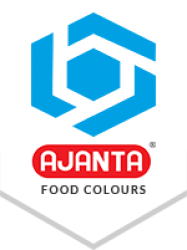Synthetic Food Colour - Erythrosine
Erythrosine, also known as Red No. 3 is a synthetic dye famous for its vivid cherry-pink to deep red shade. This brilliant dye is incredibly versatile, available in powder, granules, and liquid forms, making it suitable for various food applications as well as some non-food applications such as cosmetics and pharmaceuticals. Erythrosine dye is a top choice for manufacturers because it provides an appealing final look to products, which increases product sales and brand recognition.
History of Erythrosine Colour
Erythrosine dye has a rich history dating back to the late 19th century. It was first synthesized in 1876 by German chemist Heinrich Caro. The development of this dye was part of a broader movement in the late 1800s to create synthetic alternatives to natural colourants, which were often unstable or difficult to obtain in large quantities. At that time, Erythrosine was used only in the manufacturing of textiles and pharmaceutical products. In the 1920s this dye was started to be used in food and beverage products such as confectionery, bakery items, soft drinks, and dairy products. In 1963, the U.S. Food and Drug Administration officially approved the use of this dye in food products. Today, Erythrosine remains an important synthetic dye in the food industry, particularly in applications where a bright pink colour is desired.
Applications of Erythrosine Colour
Erythrosine, known as FD&C Red 3 in the United States is extremely versatile and used in a variety of food applications such as chocolates, candies, jellies, cakes, frostings, flavored yogurts, ice creams, soft drinks, alcoholic and non-alcoholic beverages, and more. This dye is also used in cosmetic products where cherry-pink to deep red shades are required, such as in lipsticks, foundations, blushers, etc. Additionally, Erythrosine is used in pharmaceutical products to differentiate items such as syrups, tablets, capsules, and supplements.
Drawbacks of Using Low-Quality Erythrosine Colour
Using low-quality synthetic food colours, including Erythrosine, in products can lead to various issues, especially at the commercial level, where product appearance and brand recognition play an important role in sales. Inferior colours may result in inconsistent and faded appearances on products, which can negatively impact brand reputation, lead to product recalls, and pose potential health risks to consumers. Manufacturers must ensure the quality of colours in their products to maintain product integrity and consumer trust.
Regulatory Compliance on Erythrosine Colour
All the colours, whether synthetic or natural, require approval from the governmental authority which is responsible for checking the quality and safety of colours for human consumption. In the United States, the U.S. Food and Drug Administration (FDA), in Europe, the European Food Safety Authority (EFSA), and in India, the Food Safety and Standards Authority of India (FSSAI) oversees the safety of colours. Manufacturers must follow all the regulatory standards set by these authorities to sell their products in the market without facing legal consequences. Ajanta Food Colours is a leading synthetic food colour manufacturer in India that meets all the regulatory standards of various governmental authorities around the world and provides high-quality food colours, including Erythrosine.
Ajanta Food Colours uses the latest technology and machinery in its manufacturing plants, such as ICP-OES to detect heavy metals in raw materials and finished goods, high-performance liquid chromatography for organic impurities, UV spectrometry to analyze pigment content and strength, absorbance curves of colours, thin-layer chromatography, vacuum ovens for LOD tests, humidity detection in products, and colour matching machines along with other instruments for complete testing of raw materials and colours. These advanced pieces of equipment help Ajanta provide the best quality colours to their clients and meet Ajanta’s high-quality colourant demand globally.
For the quality of its colourants and client satisfaction, Ajanta Food Colours has received various awards and certificates from Indian governmental authorities as well as from the countries where Ajanta Food Colours exports its FDA-approved, high-quality food colours. These awards and certificates include The Arch of Europe Award, the Bureau of Indian Standards (BIS) Award, certifications from The Food Safety and Standards Authority of India (FSSAI), the U.S. Food and Drug Administration (FDA), as well as Halal, Alcumus ISOQAR, Star-K Kosher, Food Safety System 22000 (FSSC 22000), and ISOQAR certifications, among others.
Conclusion
Erythrosine dye has a rich history and has been used in products for a long time. This dye is popular for providing vivid cherry-pink to deep red shades to various food and non-food products. Ajanta Food Colours is a global leader in synthetic food colour manufacturing, providing Supra Erythrosine colours that give an appealing look to products, which helps in product sales and brand recognition. To learn more about Ajanta Food Colours, its high-quality colourants, or for any other questions, please contact us today!




